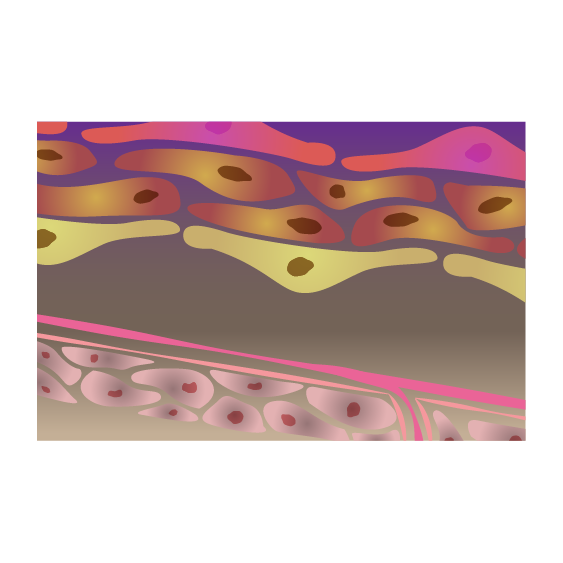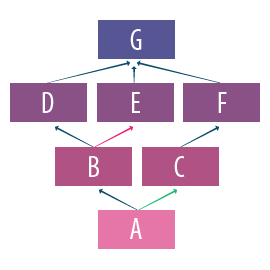GeneAnalytics is a powerful and user friendly gene set analysis tool that can rapidly contextualize experimental gene expression, and function, signatures derived from next generation sequencing of DNA and RNA and from microarray analyses. It leverages LifeMap's extensive integrated biomedical knowledgebase including, GeneCards, MalaCards and LifeMap Discovery, which utilize data from more than 100 sources.
Accessing this extensive biomedical knowledgebase enables GeneAnalytics to effectively identify tissues and cell types, and various diseases, that match experimental gene sets, based on shared gene expression patterns. GeneAnalytics can also identify diseases, biological pathways and compounds that are associated with experimental gene sets based on shared gene functionality. GeneAnalytics presents the analysis results attractively and interactively, with links to supporting data and further information.
GeneAnalytics enables researchers to identify tissues and cell types related to their gene sets of interest.
GeneAnalytics leverages the rich manually curated and high throughput gene expression information for in vitro and in vivo cells and tissues, during embryonic development, and in the adult, available via LifeMap Discovery®.
Read more about Tissue & Cells data sources.
This results section is only leverages data for normal tissues and cells. Data from tissues and cells of mutant animals or patients are not included. Note that disease-related gene expression data is available in the disease section.
Expression-based Tissues & Cells analysis by GeneAnalytics can help you to:

GeneAnalytics enables researchers to identify diseases that are potentially associated with their gene sets of interest. GeneAnalytics leverages MalaCards, the most comprehensive human disease database. MalaCards unifies and integrates more than 60 data sources, providing comprehensive coverage of diseases, including disease categorizations and disease-associated gene aggregation, along with gene-disease association rankings and annotations.
GeneAnalytics matches the query gene set to genes associated with diseases. Matching is determined by the quality and type of the gene-disease relations, including:
Differentially expressed genes, which are significantly up- or down regulated in disease tissues.
Genetic associations to diseases, determined by several MalaCards data sources, which include annotations such as: causative mutations, risk factors, and genetic test.
“GeneCards-inferred” relation, which indicates that the disease name appears in the gene page in GeneCards.
Expression & function-based, disease analysis by GeneAnalytics enables you to:

Function-based, pathways, GO terms and compounds analysis in GeneAnalytics leverages the extensive sources integrated and modeled in GeneCards®, the human genome database.
This analysis can help you to:
GeneAnalytics enables researchers to identify pathways related to their gene sets of interest.
GeneAnalytics relies on the information available in PathCards, the only resource to integrate data from multiple pathway resources into super-pathways.
PathCards applies a gene-content algorithm enabling unification and clustering of thousands of pathways from multiple pathway sources available in GeneCards®. (See GeneCards' pathway section data sources).
GeneAnalytics accurately matches query genes sets to pathways and provides interlinks to related PathCards, where all the relevant pathway information is presented. To enhance understanding of the pathway modeling, both the SuperPath and its constituent pathways are shown in the matching results, with a direct link to the pathway webpage in the original database, and the ability to filter for desired pathway data sources.
Studying pathways related to your gene set can help in the investigation of the roles of specific genes within each pathway and can shed light on their interactions and mechanisms of action.

Gene Ontology (GO) analysis in GeneAnalytics exploits the information available in the GO project, and integrated in GeneCards – the human gene database.
GeneAnalytics accurately matches gene sets to GO terms, providing supporting information about the functional roles of the query gene set in biological processes such as development, differentiation, diseases and pathways as well as in molecular functions such as binding or catalysis. Each GO term in the GeneAnalytics results includes a direct link to its web card in the AmiGo, and a list of the matched genes.

GeneAnalytics enables researchers to identify compounds related to their gene sets of interest.
GeneAnalytics takes advantage of multiple sources of information related to more than 60,000 compounds, including those found in GeneCards, the human gene database.
The information is extracted from several data sources which were unified by specific compound identifyers. Link to each data source lead to extensive biochemical and pharmacological information about the specific drug, biochemical, small molecules or metabolite, its mechanism of action and relevant targets.
The compound- gene association is determined by either direct binding between the compound and the gene product (e.g., enzyme, carrier, transporter), or by a demonstration of functional relationship (e.g., pharmacogenomics, genetic variants and drug pathways affecting drug activity).
